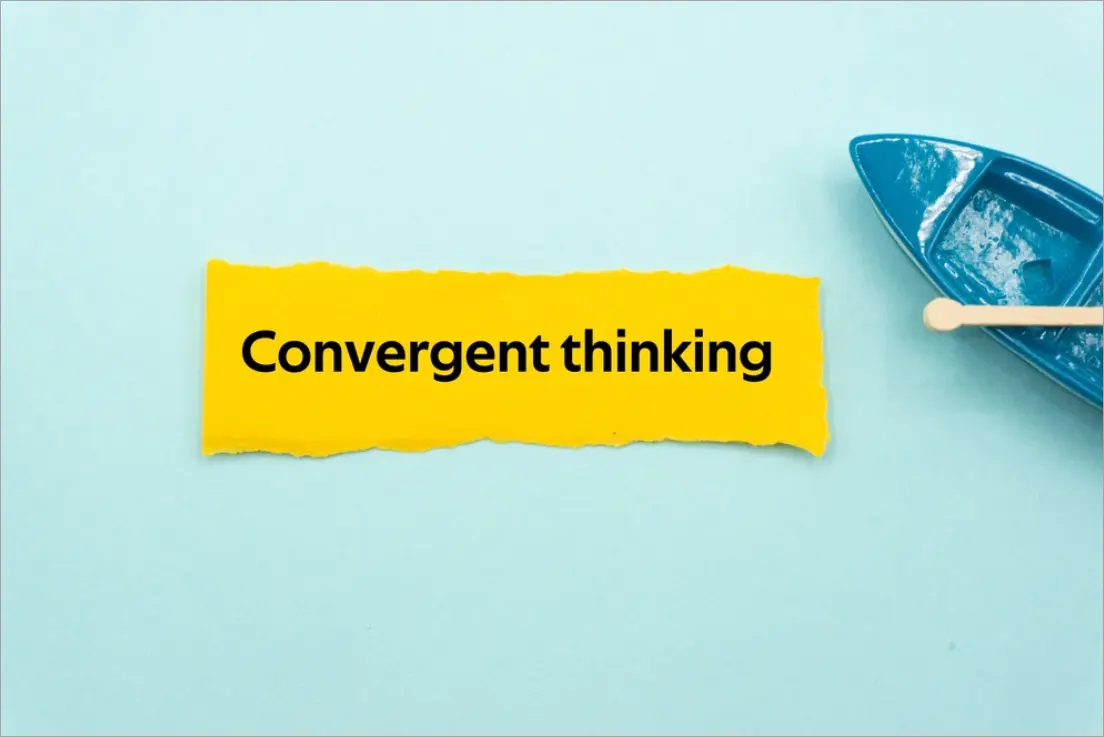Every day, an organization meets challenges. As a result, a company needs to use a variety of approaches to tackle a problem. Diverse thinking helps in finding innovative solutions to challenges, as well as encouraging collaboration and brainstorming, resulting in increased team engagement and loyalty. Project managers employ this creative thinking technique to find effective solutions to problems. It embraces two types of thinking: Convergent thinking and Divergent thinking. Convergent thinking is finding a single effective solution to the problem while divergent thinking is finding multiple creative solutions for problems.
Jump ahead to
What is Convergent thinking?

Convergent thinking is the method of determining the most efficient solution to a problem. It is the process of swiftly and efficiently selecting the best answer from a finite collection of ideas. Then project managers engage in sorting, assessing, and analyzing it in order to solve a discrete problem. Some of those ideas will be discarded because they are too costly, time-consuming, resource-intensive, or just too unconventional. The important aspects of convergent thinking are accuracy, speed, and logic. Project managers mostly use this type of thinking in situations where a problem has to be solved rapidly by aligning teams, building procedures, and planning projects.
The benefits of Convergent thinking are:
- Quick and accurate solutions to any problem
- No possibility of misunderstanding
- Encourages linear processes in an organization
What is Divergent Thinking?
Divergent thinking is a method of generating multiple creative ideas as solutions to the problem. It produces many unique and original ideas since it is spontaneous, free-flowing, and nonlinear. This kind of thinking generates numerous potential solutions and ideas in a short amount of time. Divergent thinking may not be able to find solutions faster, but the solutions it does create will be effective for a long time. Project managers use this kind of thinking to impress and satisfy their customers as they provide creative ideas for problems. Furthermore, project managers will employ divergent thinking during the brainstorming and ideation phase of the project management process to get various knowledgeable ideas and to encourage new solutions from the team members.
The benefits of Divergent thinking:
- Find unique creative solutions to problems
- Assess solutions from multiple perspectives
- Boost teamwork
- Enhances collaboration and team morale
What is the difference between Convergent Thinking and Divergent Thinking?
Solution
Project managers will only obtain one potential answer to the problem while using convergent thinking. Divergent thinking, on the other hand, yields a variety of innovative solutions to the problem. When a project manager wants a speedy response, he or she will apply Convergent thinking. On the other hand, Divergent thinking is employed to come up with excellent solutions that will persist for a long time.
Features
Convergent thinking improves the pace of performance. It helps to break down problems into smaller pieces so that precise, logical, and effective solutions may be found much faster.
Divergent thinking promotes flexibility and outside-the-box thinking and looks at problems from several perspectives, resulting in more innovative thoughts than convergent thinking.
Time
Convergent thinking takes less time while finding solutions to the problems as it generates a single solution to the problem. On the contrary, divergent thinking is a time-consuming process since it takes a longer time to produce many innovative solutions for a single problem.
What is the need for combining both Convergent thinking and Divergent thinking?
Convergent thinking and Divergent thinking can be combined by project managers to come up with an effective solution to a problem. When confronted with an issue, a project manager can use both strategies, depending on the circumstances. Divergent thinking is beneficial for creativity, whereas convergent thinking is beneficial for efficiency. Furthermore, using divergent thinking often might result in prolonged brainstorming with no results whereas, frequent use of convergent thinking can also result in a lack of fresh ideas.
Conclusion
The main difference between convergent thinking and divergent thinking is that, the former is focused on coming up with a single effective solution to the problem. Contrarily the latter is used to come up with several creative solutions to solve the same issue. Also, it is vital to consider which kind of thinking may best suit the present circumstances and the environment in which a problem has arised. Moreover, both the strategies can be integrated to provide an effective solution to the problems that can potentially impact the organization.
Such strategic thinking can be applied by project managers of the organization as they are responsible for solving every kind of project problems. To dive deeper into such strategic methods of solving problems/conflicts, professionals can take up formal training sessions to earn credentials in the field. A certification such as CAPM offered by PMI, assists professionals in grasping such deeper insights on solving project related problems. Enrolling in CAPM Training Course can assist individuals in gaining hands-on experience of the problem-solving cycle employed in organizations.



